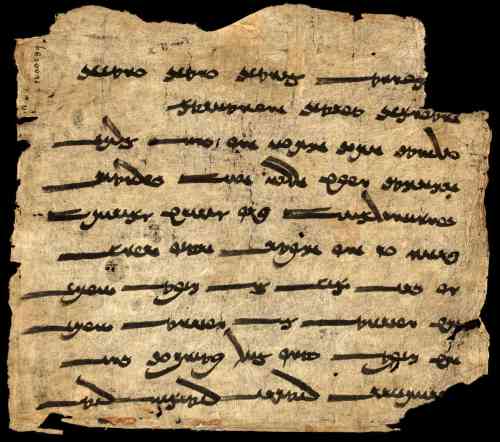We often talk about our Holy Avesta Scriptures. However, what exactly are these scriptures? How many are extant and how many have been lost over the vicissitudes of time?
Twenty-one volumes of Avesta: It is believed that there were originally twenty-one Nasks or volumes of the Avesta from the time of Asho Zarathushtra, which covered subjects like creation, details about the life of Zarathushtra as also Shah Vistasp, law, astronomy, medicine, arts and crafts and tenets of the religion, etc.
One could say the twenty-one volumes were a treasure trove of knowledge and wisdom! Unfortunately, except for one Nask or volume, all others have been lost. However, to our good fortune we have the Pahlavi Denkard written during the ninth century, which scholars consider as an authoritative and detailed summary of the twenty-one Nasks.
Each of the twenty-one volumes was named after the twenty-one words of the Yatha Ahu Vairyo payer. For eg., the first Nask was called Yatha (Pahlavi Studgar) and had twenty-two chapters. The second volume was called Ahu and had twenty-two chapters. The third volume was called Vairyo and had twenty-one chapters and so on till the twenty-first Nask, which was called Vastarem, with thirty-three chapters.
 The Pahlavi Denkard: As stated earlier, the Pahlavi Denkard is a summary (complied during the ninth century AC) of the original twenty-one Avesta Nasks. However, is the summary authentic? Scholars tell us that the compiler of the Denkard had nineteen of the twenty-one Nasks at his disposal for he describes all nineteen of them in detail.
The Pahlavi Denkard: As stated earlier, the Pahlavi Denkard is a summary (complied during the ninth century AC) of the original twenty-one Avesta Nasks. However, is the summary authentic? Scholars tell us that the compiler of the Denkard had nineteen of the twenty-one Nasks at his disposal for he describes all nineteen of them in detail.
Scholars also believe that the compiler’s account of the nineteen volumes is authentic because his summary of the Avesta Vendidad which is the only Nask that we have in its entirety, is very precise. We only have fragments of all the other Nasks and the Yasna (which priests recite during the Ijashne ceremony) and Yashts (Hymns that both priests and laity recite), sourced from the lost Nasks.
How Were The Nasks Lost Or Destroyed? It is believed that during the pre-historic Kayan dynasty, the evil King of Turan – Arjasp – was the first to try destroying the twenty-one Nasks. However, his attempt to burn the volumes failed.
According to traditional accounts, the twenty-one volumes remained safe until Alexander of Macedonia in a drunken fit burned Persepolis and with that, the great library, at this citadel of peace, progress and prosperity. The Persian Vajarkard Dini States that after Alexander, only a few chapters of four Nasks existed.
Attempts were made during the Parthian dynasty to recompile the volumes. However, it was under Ardashir Babagan, the founder of the Sasanian dynasty, that the scattered volumes were recompiled and committed to writing, under the leadership of Dastur Tosar (Tansar). Fortunately, in ancient times, the scriptures were preserved more by rote (memorising) than writing.
What Is Extant? What we have today are twenty-two chapters of the Vendidad, seventy-two chapters of the Yasna, twenty-three chapters of the Visperad, eight chapters of the Vistasp Nask, three chapters of the Hadokht Nask, fragments of Aogemadaecha, some fragments beginning with the Vaetha volume, the Khorde Avesta with the Niyayesh (litany) and Yasht (hymns).
According to scholars, the Yasna is not a Nask but a composition from various lost volumes. The Visperad is not a Nask either. The twenty-three chapters of the Visperad are woven around the seventy-two chapters of the Yasna. The five Gatha are part of the seventy-two chapters of the Yasna. The Gatha are believed to be compositions of Asho Zarathushtra himself, and comprise seventeen chapters – mainly chapters 28 to 34, chapters 43 to 51 and chapter 51 of the Yasna.
Sacred Chants: The Avesta compositions are called Manthra (sacred chants) which have Divine Power and Potency if chanted accurately, with faith as also purity of body and mind. The Pahlavi Denkard (Book 3) asserts that Manthra are created through harwisp-agahih ud kerog or the omniscience and power of Ohrmazd (the Supreme Divinity).
Although what we have with us today is the proverbial tip of the iceberg, it is still enough to have sustained the community over the centuries. These chants are ancient but replete with the power to heal and vanquish all forces of negativity.
- Celebrating The Interplay Of Life And Fire! - 20 April2024
- Customs To Observe At Atash Behram Or Agyari - 13 April2024
- A Shower Of Spring Festivals - 6 April2024
